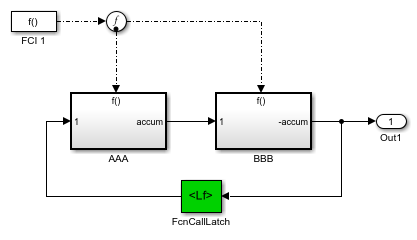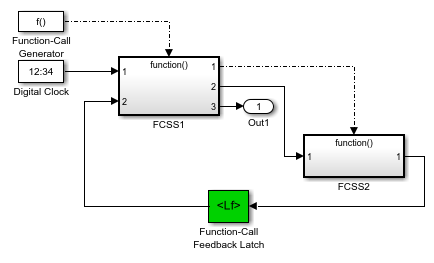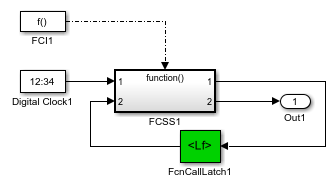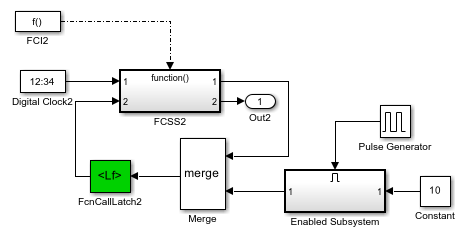Function-Call Generator
提供函数调用事件来控制子系统或模型的执行
库:
Simulink /
Ports & Subsystems
描述
Function-Call Generator 模块提供函数调用事件,用于以您在采样时间参数中指定的速率执行函数调用子系统或函数调用模型。函数调用子系统或函数调用模型是包含 Trigger 模块的子系统或模型,其触发器类型参数设置为函数调用。
要以迭代方式在每个时间步中多次执行每个函数调用子系统或函数调用模型,请使用迭代次数参数。
要以指定的顺序执行多个函数调用子系统或函数调用模型,请结合使用 Function-Call Split 模块和 Function-Call Generator 模块。有关示例,请参阅 Function-Call Split。
要间歇地(意味着不是在每个时间步)执行函数调用子系统或函数调用模型,请选择显示使能端口参数。然后,您可以使用使能端口的输入来控制模块何时输出函数调用事件。实际上,您可以根据需要打开和关闭模块。
注意
从 R2025a 开始,Function-Call Generator 模块不再作为封装链接模块运行。要以编程方式在模型中定位此模块,请使用命令 find_system('BlockType','FunctionCallGenerator')。当从其他版本更新到 R2025a 时,建议修复任何与 Simulink® 库的链接已断开的 Function-Call Generator 模块。否则,该模块将不会更新,并会在更新后的模型中继续作为封装模块运行。此模块的封装行为将在以后的版本中删除。有关识别模型中断开的库链接的详细信息,请参阅显示库链接。
对于 R2025a 之前的版本,要以编程方式在模型中定位此模块,请使用命令 find_system('MaskType','Function-Call Generator')。
示例
端口
输入
输出
参数
模块特性
数据类型 | |
直接馈通 |
|
多维信号 |
|
可变大小信号 |
|
过零检测 |
|



